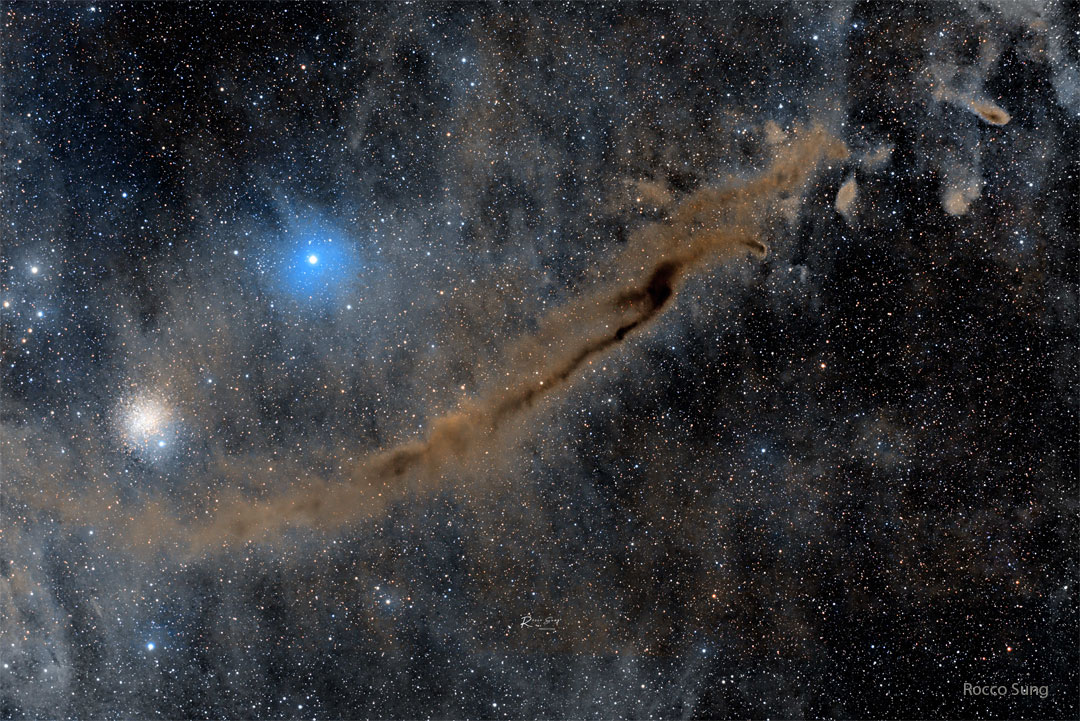Nombre total de pages vues
26/06/2024
SANTé/MEDECINE - Anatomie du coeur humain - Infarctus dans le ventricule gauche
SANTé/MEDECINE - L'immortalité pour bientôt - Télécharger son cerveau
ASTRONOMY - Timelapse: Aurora SAR and the Milky Way
2024 June 26
Video Credit & Copyright: Jeff Dai (TWAN); Music (License): Suite bergamasque by Claude Debussy
Explanation: What's happening in the sky this unusual night? Most striking in the featured 4.5-hour 360-degree panoramic video, perhaps, is the pink and purple aurora. That's because this night, encompassing May 11, was famous for its auroral skies around the world. As the night progresses, auroral bands shimmer, the central band of our Milky Way Galaxy rises, and stars shift as the Earth rotates beneath them. Captured here simultaneously is a rare red band running above the aurora: a SAR arc, seen to change only slightly. The flashing below the horizon is caused by passing cars, while the moving spots in the sky are satellites and airplanes. The featured video was captured from Xinjiang, China with four separate cameras.
25/06/2024
SANTé/MEDECINE - Anatomie du coeur humain - Vue de la valve tricuspide
SANTé/MEDECINE - L'immortalité pour bientôt - L'immortalité biologique peut être réelle
ASTRONOMY - The Dark Doodad Nebula
Image Credit & Copyright: Martin Pugh & Rocco Sung
Explanation: What is that strange brown ribbon on the sky? When observing the star cluster NGC 4372, observers frequently take note of an unusual dark streak nearby running about three degrees in length. The streak, actually a long molecular cloud, has become known as the Dark Doodad Nebula. (Doodad is slang for a thingy or a whatchamacallit.) Pictured here, the Dark Doodad Nebula sweeps across the center of a rich and colorful starfield. Its dark color comes from a high concentration of interstellar dust that preferentially scatters visible light. The globular star cluster NGC 4372 is visible as the fuzzy white spot on the far left, while the bright blue star gamma Muscae is seen to the cluster's upper right. The Dark Doodad Nebula can be found with strong binoculars toward the southern constellation of the Fly (Musca).
24/06/2024
SANTé/MEDECINE - Anatomie du coeur humain - Échocardiographie d’un cœur normal
SANTé/MEDECINE - L'immortalité pour bientôt - Bon appétit !
ASTRONOMY - JADES-GS-z14-0: A New Farthest Object
2024 June 24
Image Credit: NASA, ESA, CSA, STScI, B. Robertson (UC Santa Cruz), B. Johnson (CfA), S. Tacchella (Cambridge), P. Cargile (CfA)
Explanation: What if we could see back to the beginning of the universe? We could see galaxies forming. But what did galaxies look like back then? These questions took a step forward recently with the release of the analysis of a James Webb Space Telescope (JWST) image that included the most distant object yet discovered. Most galaxies formed at about 3 billion years after the Big Bang, but some formed earlier. Pictured in the inset box is JADES-GS-z14-0, a faint smudge of a galaxy that formed only 300 million years after the universe started. In technical terms, this galaxy lies at the record redshift of z=14.32, and so existed when the universe was only one fiftieth of the its present age. Practically all of the objects in the featured photograph are galaxies.
ASTRONOMY - NGC 2685: The Helix Galaxy
2025 July 14 NGC 2685: The Helix Galaxy Image Credit & Copyright: Stefan Thrun Explanation: What is going on with this galaxy? NGC 2...

-
2022 September 26 All the Water on Planet Earth Illustration Credit: Jack Cook, Adam Nieman, Woods Hole Oceanographic Institution ; Data ...
-
2024 September 7 Small Moon Deimos Image Credit: HiRISE , MRO , LPL (U. Arizona) , NASA Explanation: Mars has two tiny moons, Phobos a...







